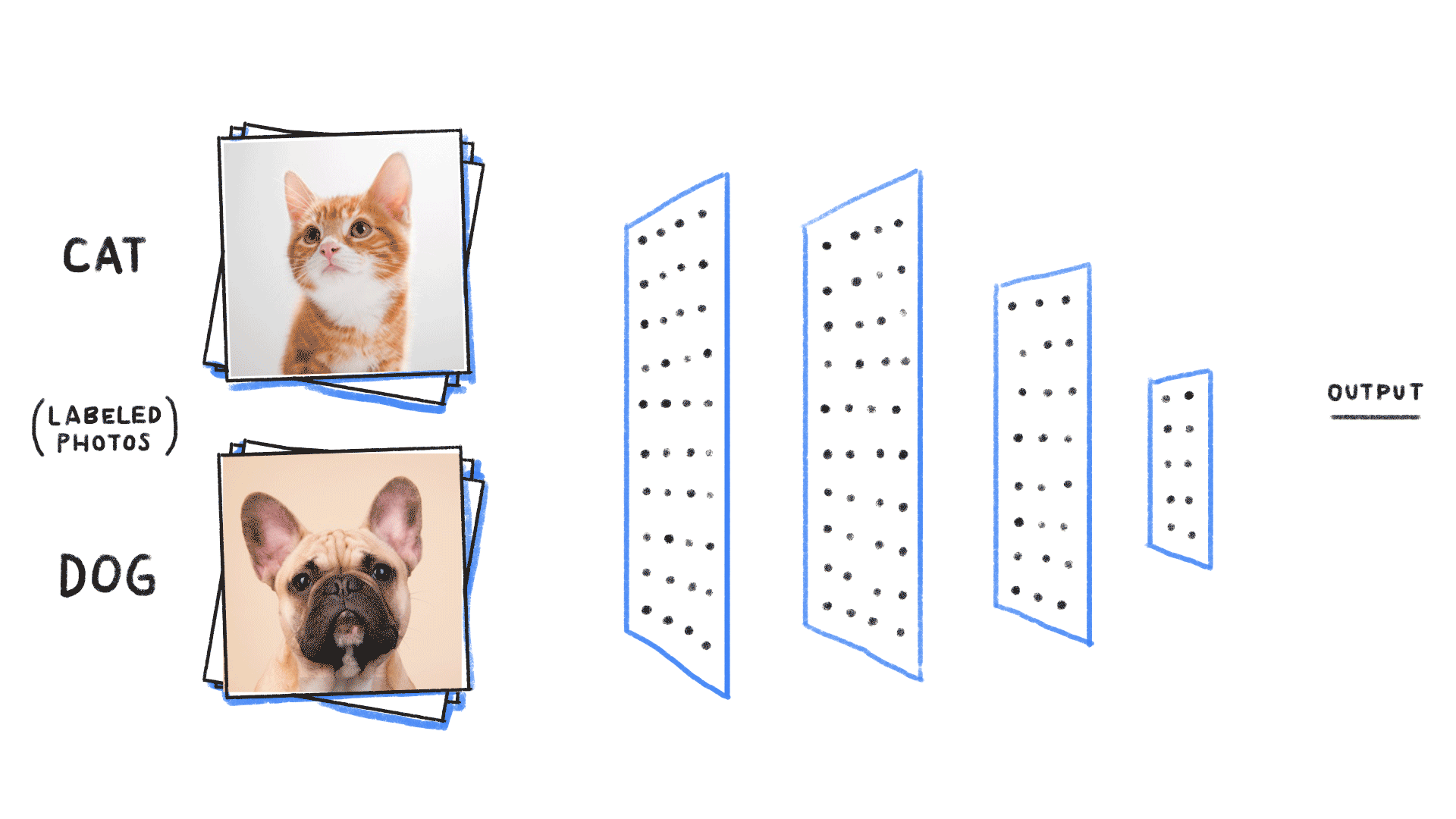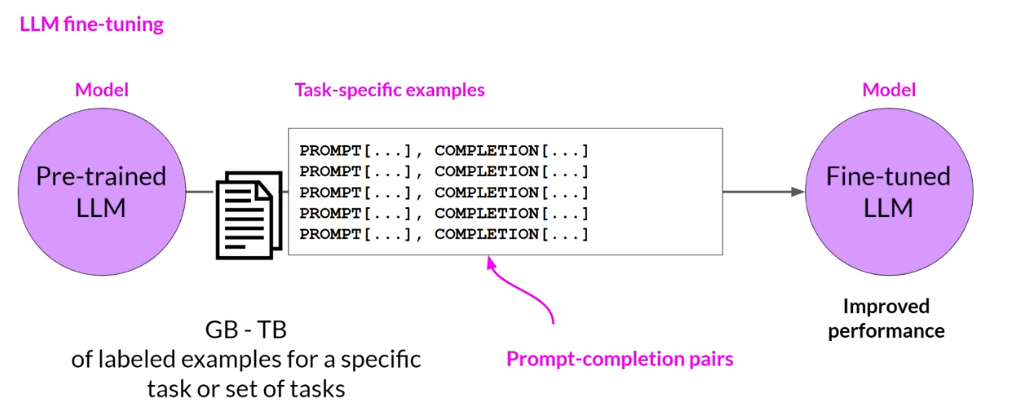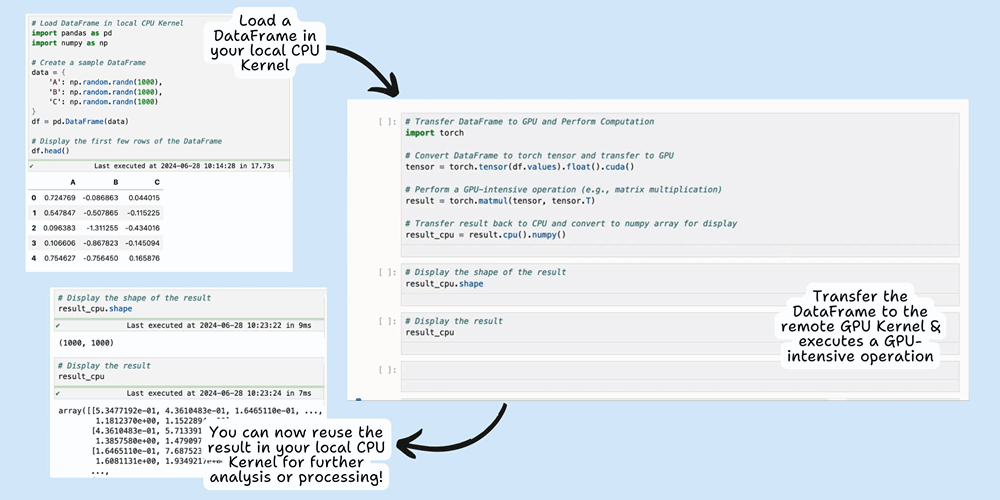This repository contains Jupyter notebook examples showcasing scenarios where Datalayer RUN proves highly beneficial. Datalayer RUN allows you to scale Jupyter Kernels from your local JupyterLab or CLI to the cloud, providing the capability to run your code on powerful GPU(s) and CPU(s). 🚀
The Technical validation section delves into system checks and performance benchmarks to ensure optimal GPU and CPU utilization, while the Use cases section explores typical AI scenarios where scaling proves essential.
💡 Note that you can use any notebook within Datalayer without requiring any code changes.
pip install jupyter-kernels
git clone https://github.com/datalayer/examples.git datalayer-examples
cd datalayer-examples
jupyter labRead the documentation website to know more about how setup Datalayer RUN. Don't worry, it is easy 👍
You just need to install the package, open JupyterLab, click on the Jupyter kernels tile in the JupyterLab launcher, create an account, wait a bit for your Kernels to be ready, and then just assign a Remote Kernel from any Notebook kernel picker.
This notebook contains scripts and tests to perform GPU sanity checks using PyTorch and CUDA. The primary goal of these checks is to ensure that the GPU resources meet the expected requirements.
This notebook explores the performance differences between serial and parallel execution on CPU and GPU using PyTorch. We'll compare the execution times of intensive computational tasks performed sequentially on CPU and GPU, as well as in parallel configurations.
- Face detection on YouTube video with OpenCV
- Image classification model training with fast.ai
- 'Personalized' text-to-image model creation with Dreambooth
- Text generation using the Transformers library
- Instruction tuning for Mistral 7B on Alpaca dataset
This example utilizes OpenCV for detecting faces in YouTube videos. It uses a traditional Haar Cascade model, which may have limitations in accuracy compared to modern deep learning-based models. It also utilizes parallel computing across multiple CPUs to accelerate face detection and video processing tasks, optimizing performance and efficiency. Datalayer further enhances this capability by enabling seamless scaling across multiple CPUs.
This example demonstrates how to build a model that distinguishes cats from dogs in pictures using the fast.ai library. Due to the computational demands of training a model, a GPU is required.
This example uses the Dreambooth method which takes as input a few images (typically 3-5 images suffice) of a subject (e.g., a specific dog) and the corresponding class name (e.g. "dog"), and returns a fine-tuned/'personalized' text-to-image model. (source: Dreambooth). To do this fune-tuning process, GPU is required.
This example demonstrates how to leverage Datalayer's GPU Kernels to accelerate text generation using Gemma 7B model and the HuggingFace Transformers library. We will be using Gemma-7b and Gemma-7b-it which is the instruct fine-tuned version of Gemma-7b.
Mistral 7B is a large language model (LLM) that contains 7.3 billion parameters and is one of the most powerful models for its size. However, this base model is not instruction-tuned, meaning it may struggle to follow instructions and perform specific tasks. By fine-tuning Mistral 7B on the Alpaca dataset using torchtune, the model will significantly improve its capabilities to perform tasks such as conversation and answering questions accurately. Due to the computational demands of fine-tuning a model, a GPU is required.
Datalayer supports the remote execution of code using the CLI. Refer to this page for more information.
Sharing state between notebook and CLI

When using the same Kernel, variables defined in a notebook can be used in the CLI and vice versa. This holds also true when using multiple notebooks connected to the same kernel, for example.
Datalayer offers the possibility to use cell-specific Kernels, allowing you to execute specific cells with different kernels. This feature optimizes costs by enabling you to, for example, leverage the local CPU for data preparation and reserving the powerful (and often more expensive) GPU resources for intensive computations.










